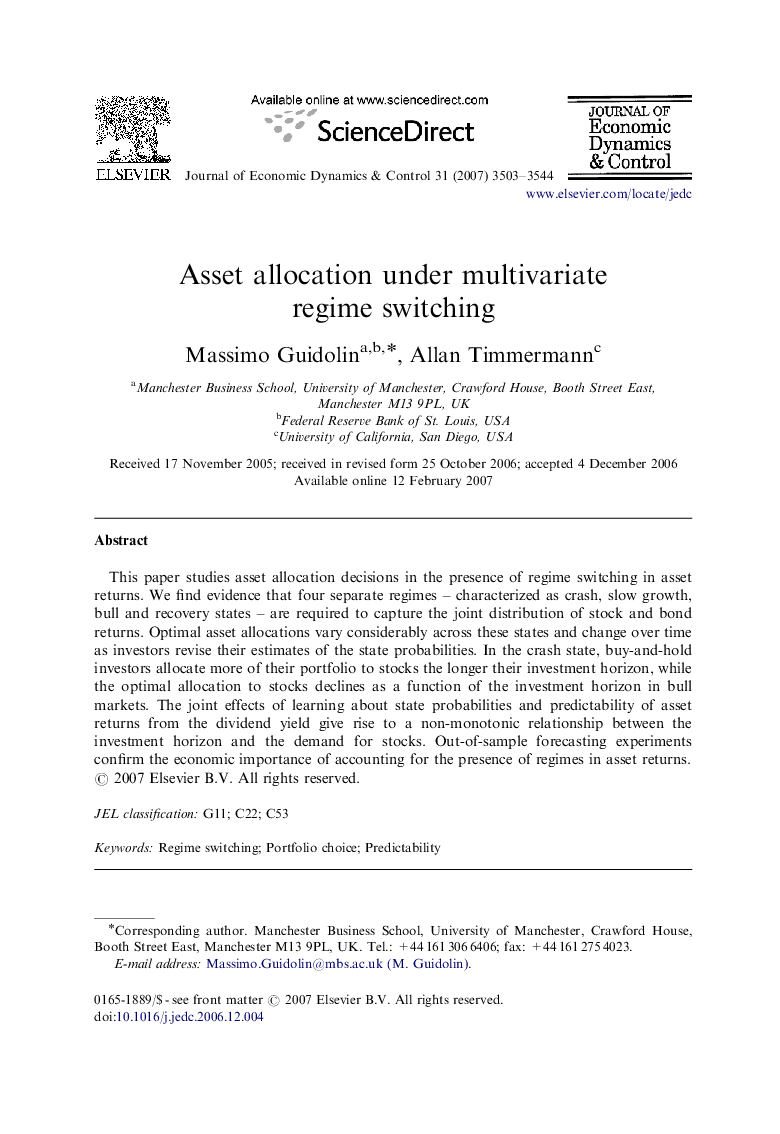| Article ID | Journal | Published Year | Pages | File Type |
|---|---|---|---|---|
| 5099601 | Journal of Economic Dynamics and Control | 2007 | 42 Pages |
Abstract
This paper studies asset allocation decisions in the presence of regime switching in asset returns. We find evidence that four separate regimes - characterized as crash, slow growth, bull and recovery states - are required to capture the joint distribution of stock and bond returns. Optimal asset allocations vary considerably across these states and change over time as investors revise their estimates of the state probabilities. In the crash state, buy-and-hold investors allocate more of their portfolio to stocks the longer their investment horizon, while the optimal allocation to stocks declines as a function of the investment horizon in bull markets. The joint effects of learning about state probabilities and predictability of asset returns from the dividend yield give rise to a non-monotonic relationship between the investment horizon and the demand for stocks. Out-of-sample forecasting experiments confirm the economic importance of accounting for the presence of regimes in asset returns.
Related Topics
Physical Sciences and Engineering
Mathematics
Control and Optimization
Authors
Massimo Guidolin, Allan Timmermann,
